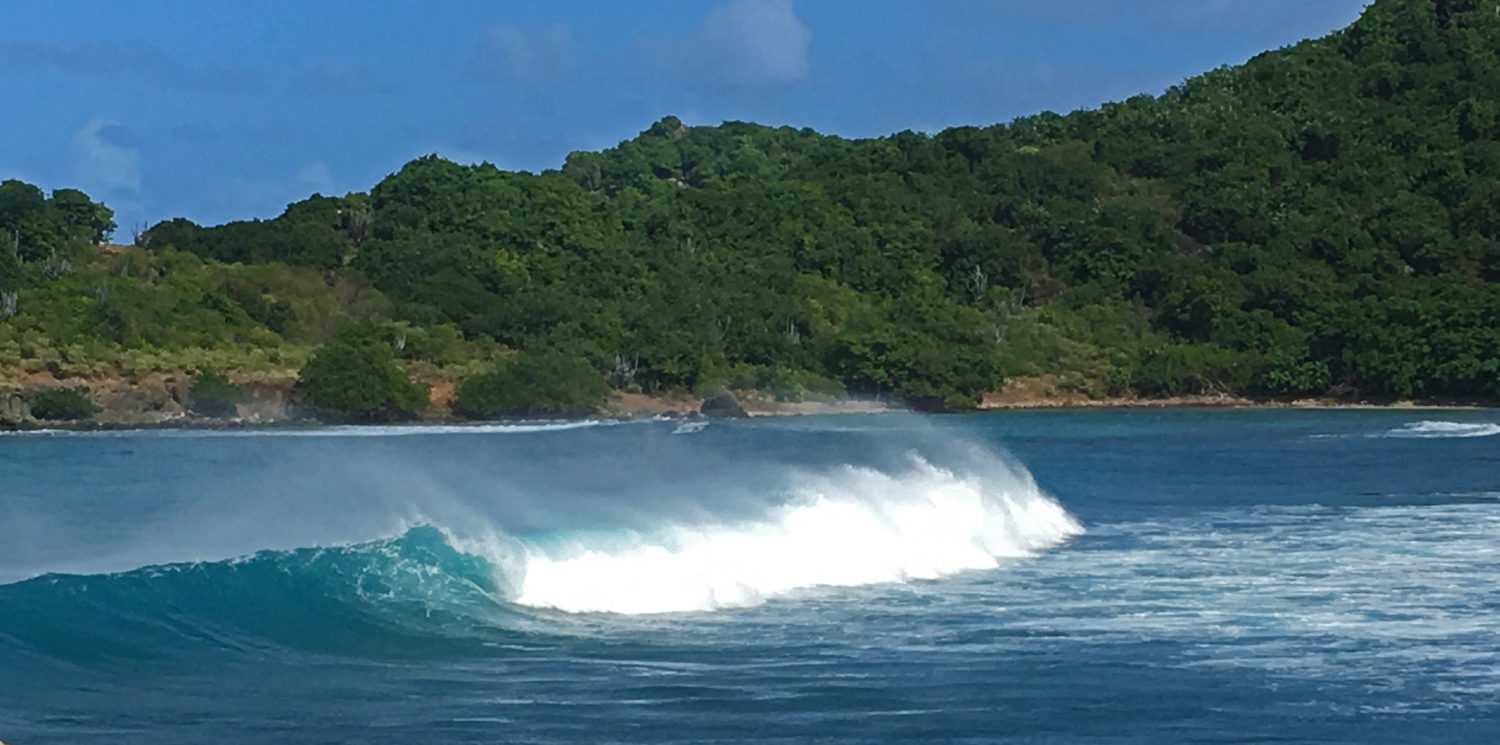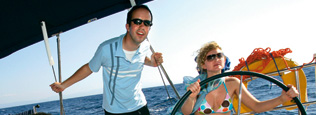In looking for checklists and how to prepare for sailing, we came across this series of articles from Yachting World. While we no Atlantic Crossing in our future, the planning equally applies for any extended trip beyond the sight of land.
We’re going to plagiarize away and use it to develop our own cruising preparations list, as the principles here can be applied to any cruise regardless of how long.
Mon, 23 Nov 2009
Yachting World
Insider’s suggestions to make the big adventure go smoothly.
Collated by Elaine Bunting
1. Keep the downwind sailplan simple
What’s the best sail confi guration for a downwind crossing? Actually, the chances are you already have sails that are perfectly suitable: a robust genoa and your mainsail. Goosewinged, you can reel off some good, consistent days’ runs without any of the downtime or extra crew on deck required by a spinnaker. You can keep the pole triangulated in place with a foreguy, a topping lift and an afterguy. An advantage of fi xing the pole in place is that you can easily reef the headsail or furl it away if you need to with the pole left in place. However, when the wind drops, or if you want the fun of squeezing out a bit of extra speed, it’s time to play with spinnakers.
“They’re great in light winds and can considerably cut the rolling of the boat,” says Chris Tibbs. James Anderson agrees: “Carry a spinnaker and don’t be afraid to fl y it. It’s the best downwind sail there is.”
Make sure the preventer is taken from the end of the boom, preferably led to the bow and back to the cockpit to avoid breaking your boom.
2. Check and double-check your rig
Before any and every long passage, check your rig – everything from rigging screws, shackle mousing, chafe points to spreader ends and roots. Consider paying a professional rigger to check it for you. At sea, do a daily walk round the boat looking at everything that moves or runs.
Mike Kopman says: ” I make walking around the deck part of sunrise and sunset routines, inspecting blocks, turnbuckles, shrouds, lines and sails. Look for chafe, and look up too. If you’ve got a calm spell, send someone up the rig and pay particular attention after rough weather.”
3. Make safety your No 1 rule
It never ceases to amaze us how many yachts arrive in Las Palmas for the ARC missing key safety gear or with lifejackets and harnesses still in the original wrappers. Quite aside from a skipper’s duty to them, nothing earns a crew’s confidence and respect more than seeing that safety has been meticulously attended to.
All your safety gear should be in good working order and flares, fire extinguishers, EPIRBs and liferaft in date. “I always give the job of checking these to new crewmembers so they get familiar with the location and use of all this equipment,” Mike Kopman says.
“I also get new crew to fit jackstays and check all bilge pumps, float switches, high level alarms and smoke alarms. Poking around in the bilges gives new crew a good opportunity to see parts of the boat they might otherwise ignore, but could well be the scene of an emergency.”
Everyone on board should know and respect the rules for safety. Don’t be afraid to ask crew to wear lifejacket/harness in all conditions – then there’s no confusion – but always use them at night, if you’ve got a reef in, and certainly in bad weather. If in doubt, don’t hesitate to go for the safe option.
Establish standing orders, such as not leaving the cockpit to go forward if there’s no one else on deck and not peeing over the side.
Regarding equipment, James Anderson has one specific piece of advice: “At around £200, passive AIS (receiver only) is probably the best value technical safety at sea device there is.”
4. Practise, practise, practise
Having the safety gear is one thing, using it in anger quite another. Let your crew know what the safety procedures and plans are and have a practice run with your Atlantic crew of a man overboard manoeuvre. That way there’s no confusion about what is to happen and who is to do what if it happens for real, and how you’ll stop the boat if you’re trucking downwind with poled-out headsail or spinnaker.
“Assign roles to each crewmember for different emergencies (for example, fire, fl ooding, abandoning ship) and post these in a prominent place,” advises Mike Kopman. “Then practise these procedures so everyone knows what’s expected of them. This is especially important if you’ve got new crew aboard.”
5. Know the medical situation and history of all your crew
Make sure you are aware of any medical conditions and medications of all crew and their medical history. Your medical kit should include something to sedate a crewmember should that ever become necessary. If you have to administer any medication on passage, note the times and dosages carefully in your written log and have it witnessed by another crewmember.


Good post. I absolutely appreciate this website. Stick with it! Avery, Italy
Thanks for your comment Avery. We’ll be sure to get in touch when we’re looking for something to do in Calabria.